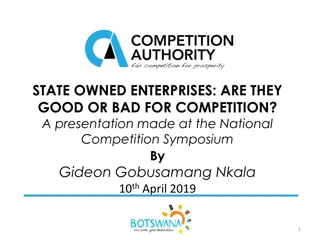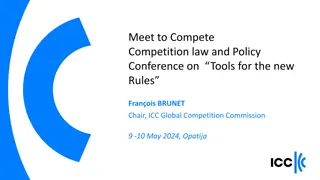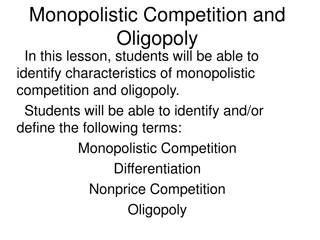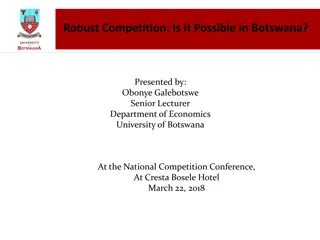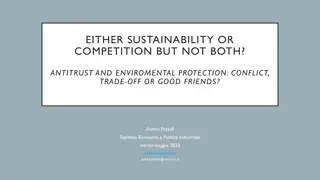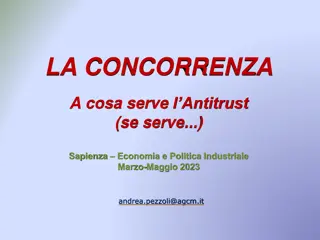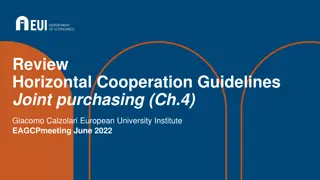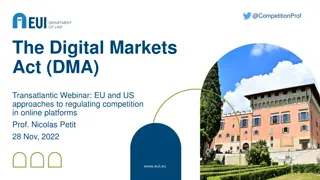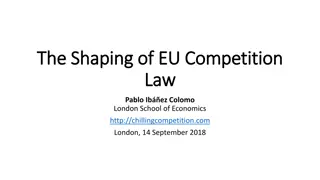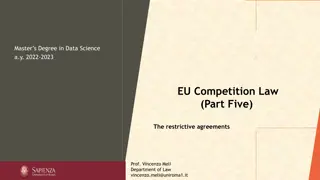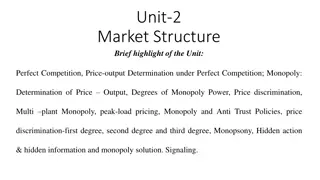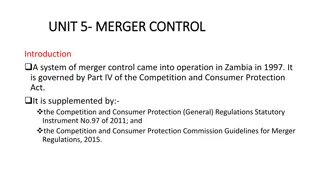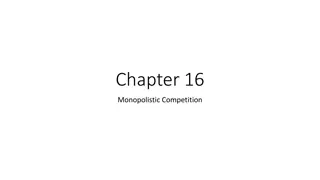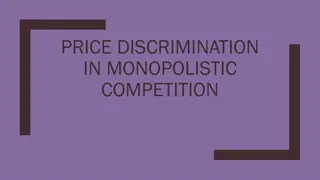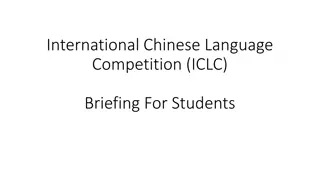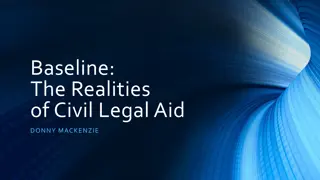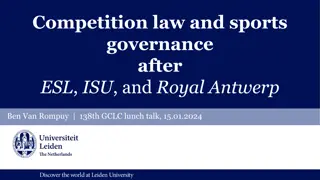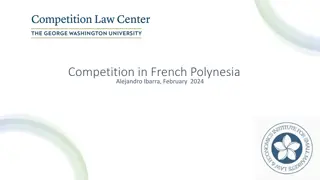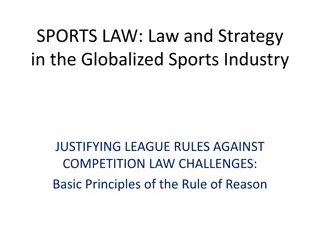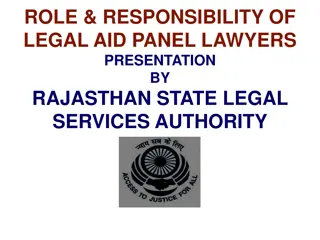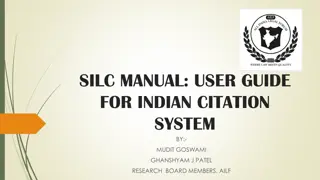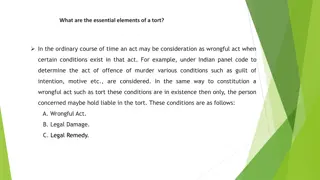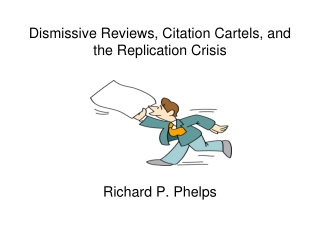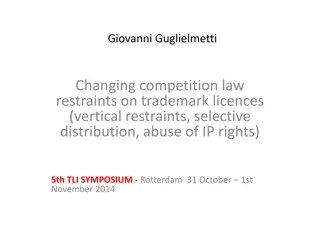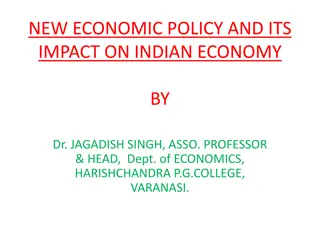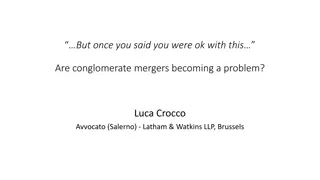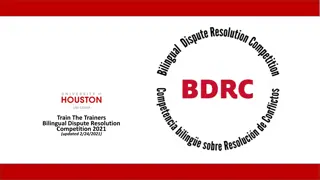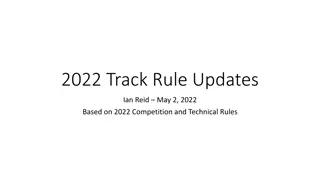Insights into Legal Cartels for Competition Policy
Legal cartels offer valuable insights for competition policy, shedding light on elusive cartels, the upside of legal cartels, and what cartels look like. Through studying legal cartels, researchers aim to understand their impact, characteristics, and implications for antitrust measures. By analyzing data on legal cartels, we can gain a better understanding of the intricacies of cartels and improve competition policies.
Download Presentation

Please find below an Image/Link to download the presentation.
The content on the website is provided AS IS for your information and personal use only. It may not be sold, licensed, or shared on other websites without obtaining consent from the author. Download presentation by click this link. If you encounter any issues during the download, it is possible that the publisher has removed the file from their server.
E N D
Presentation Transcript
What can we learn from legal cartels for competition policy? Otto Toivanen Aalto University, Helsinki GSE & CEPR 23.6.2022 1
Contents Why study legal cartels? Some examples of studies using data on legal cartel Quasi-experiments in competition policy 2
Elusive cartels Antitrust continues to be of major importance Illegal cartels are a challenging object: We know a lot about the exposed illegal cartels We know nothing about the unexposed illegal cartels Q1: Is there a cartel in market m in period t? Q2: In what dimensions are the exposed (il)legal cartels a non-random sample of all cartels? 3
Upside of legal cartels Contrary to what one might think, legal cartels are not an aberration Sherman act in 1890 Cartels became illegal in Finland, Sweden, Norway, Austria in the 90s 1990s See e.g. Fellman, Susanna, Martin, Shanahan (eds.) 2016. Regulating Competition - Cartel registers in the twentieth-century world. Explorations in Economic History. Routledge. 4
Upside of legal cartels Link to modernity: Legal cartels provide a counterfactual: how many cartels and of what type would be observe in the absence of antitrust? Many things observable that usually not available 5
Upside of legal cartels Data source: In many countries, cartels were required to register. Large numbers of cartels observed: Finland: some 900 cartels Norway: close to 500 Austria: 120+ Many characteristics of cartels are observed: Cartel contracts observed and also codified for several countries. See e.g. Hyytinen, Steen and Toivanen, 2019. An anatomy of cartel contracts, Economic Journal and Fink, Schmidt-Dengler, Stahl and Zulehner, 2017. Registered cartels in Austria: an overview, European Journal of Political Economy) Also of potential interest: an older descriptive literature (see HST 2019 Table A1 for 13 references) 6
What do cartels look like? (HST EJ2019) Useful for competition policy: what to look for and where? 7
What do cartels look like? (HST EJ2019) Quota cartels have More complicated contracts Contract enforcement Clauses on non-cartel supply Dispute resolution 8
How many cartels are there? Central question for antitrust (Q1): Is there a cartel in a given market at a given point in time? Hyytinen, Steen and Toivanen, 2018. Cartels uncovered, American Economic Journal: Microeconomics HST study 193 Finnish manufacturing cartels HST study how many cartels there were when there was no antitrust 9
How many cartels are there? Problem: cartels are observed in the Finnish registry only occasionally. outside observer cannot always know whether the cartel is alive or not HST use a Hidden Markov model + a base model of cartels to deal with the problem Key in the model are transition probabilities from one state ( cartel ) to another state ( no cartel , unknown ) 10
How many cartels are there? (HST AEJMicro 2018) The increase in the number of cartels is not due to the demand shock in the early 1970s (oil crises) Industry price-cost margin positively associated with P(cartel) legal cartels harmful at least in a static sense Essentially all Finnish manufacturing cartelized by end of 1980s Advantage of the methodology: could be applied to data on legal cartels 13
Natural experiments potentially very useful for competition policy analysis Norwegian oil discovery (HST, ongoing work) Introduction of leniency (Dong, Massa, Zaldokas, 2019. The effects of global leniency programs on margins and mergers, RAND Journal of Economics) Banning cartels (e.g. Symeonidis, 2008. The effect of competition on wages and productivity: Evidence from the United Kingdom, Review of Economics and Statistics) 14



